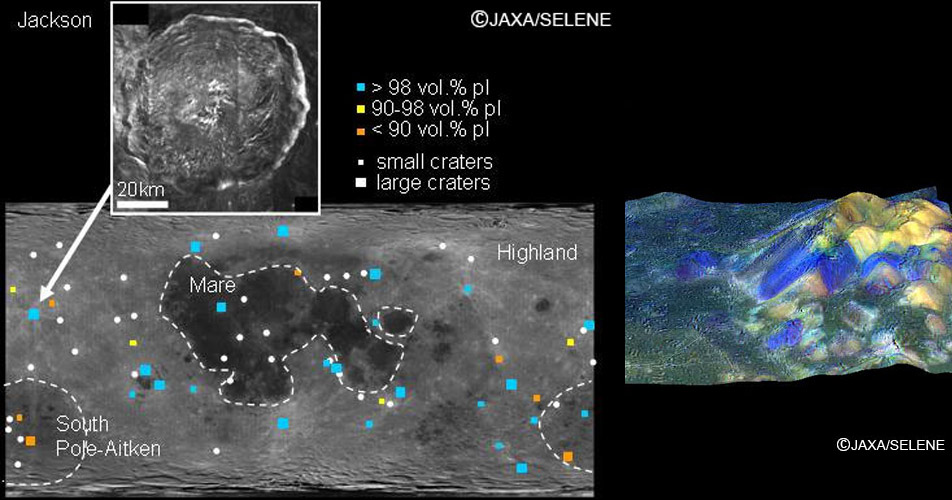Difference between revisions of "September 13, 2009"
| Line 2: | Line 2: | ||
=Color Me Anorthosite= | =Color Me Anorthosite= | ||
| − | + | <!-- ws:start:WikiTextHeadingRule:0:<h1> --> | |
| − | + | <!-- ws:start:WikiTextLocalImageRule:6:<img src="/file/view/LPOD-Sept13-09.jpg/88508997/LPOD-Sept13-09.jpg" alt="" title="" /> -->[[File:LPOD-Sept13-09.jpg|LPOD-Sept13-09.jpg]]<!-- ws:end:WikiTextLocalImageRule:6 --><br /> | |
<em>image from [http://wms.selene.jaxa.jp/selene_viewer/index_j.html Japanese section of the Kaguya image Gallery], JAXA/Selene</em><br /> | <em>image from [http://wms.selene.jaxa.jp/selene_viewer/index_j.html Japanese section of the Kaguya image Gallery], JAXA/Selene</em><br /> | ||
<br /> | <br /> | ||
| Line 14: | Line 14: | ||
<br /> | <br /> | ||
<hr /> | <hr /> | ||
| − | |||
| − | |||
| − | |||
| − | |||
Revision as of 23:49, 2 January 2015
Color Me Anorthosite

image from Japanese section of the Kaguya image Gallery, JAXA/Selene
The Japanese lunar orbiter Kaguya is gone, but great science keeps coming from its data. These images show the global distribution of lunar craters whose central peaks are enriched in anorthosite. The blue squares are peaks that are essentially pure anorthosite and yellow and orange represent very high concentrations. White dots are craters of any size that do not have freshly exposed surfaces and can not have their anorthosite concentrations determined. Small squares are craters smaller than 30 km in diameter and big squares are bigger craters. Central peaks are studied because they bring up material from 3-30 kilometers beneath the surface. The importance of anorthosite is that it is believed to have formed in the magma ocean at the tail end of the Moon's accretion. As a low density mineral it floated to the surface as a scum and presumably remains there, except where penetrated by later impacts or covered by mare lavas or megaregolith. This image is important in showing that highly anorthosite enriched peaks occur widely across the Moon, supporting the idea of a global magma ocean. The detailed image to the right shows the central peak of the farside crater Jackson, revealing high resolution mapping on a 3-D perspective of the distribution of anorthosite in the peak. An intriguing observation - already known from terrestrial work - is that Aristarchus is anorthosite-rich suggesting that primordial magma ocean crust underlies it. This has been offered as strong evidence against the existence of the putative Gargantuan Basin (that covers half the nearside), for the anorthosite crust is expected to be removed by the giant basin's formation. Aristarchus is the only nearside crater within the maria fresh enough for its anorthosite to be detected, which is not to me compelling evidence that the magma ocean crust is extant within most of the Gargantuan region.
Chuck Wood
Related Links
A professional article on these findings has just been published by Kaguya scientists.



